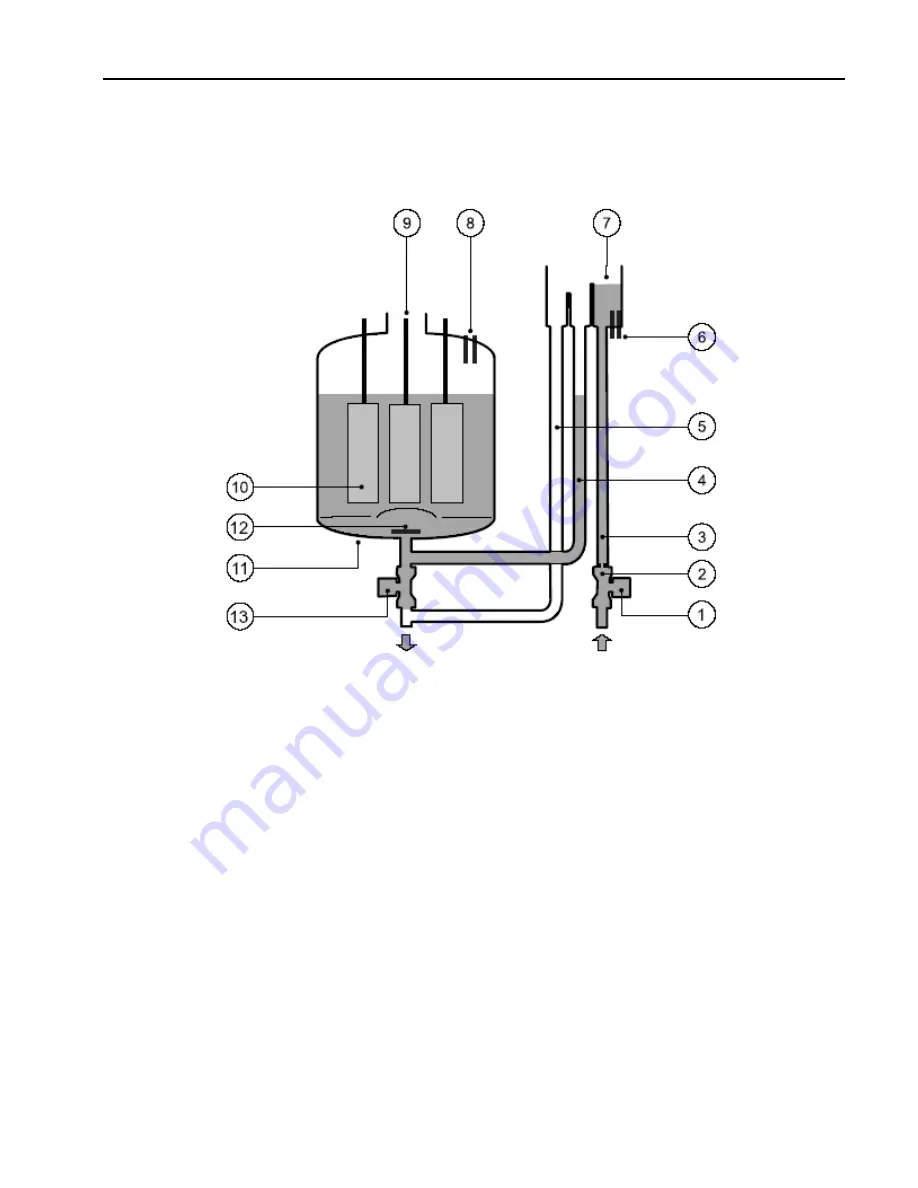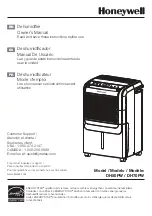
Installation, Operating & Maintenance Manual
9
10/25/2004
How The HU315 Works
HU315 is an electrode humidifier. It produces steam for humidification by passing electrode current through the
water in the steam generator cylinder between metal electrodes. There are no heater elements. Steam output
is directly proportional to the conductivity of the water, and the amount of electrode immersed in the water.
On a call for humidity, the HU315 controller will open the water fill valve (1) and allow water to enter the system.
A flow restrictor (2) prevents the unit from filling too quickly or with too much pressure. The water flows up the
fill tube (3) and into the fill cup (7), where it flows over the conductivity probes (6), which feed the water
conductivity back to the controller for analysis. Water then flows over the dam in the fill cup (7), which creates
a 1” air gap to prevent backflow of contaminated water into the feed lines, and through the fill tube (4) and into
the bottom of the steam cylinder (11).
As the water fills the cylinder, it will reach the electrodes (10) and current will begin to flow. As the water
continues to fill the cylinder, the current will increase, and this is monitored by an amperage transformer placed
on one of the power wires (9). When the desired current is reached, the fill valve will close (1) and the water
will then begin to warm and produce steam. If the water reaches the cylinder full probes (8) prior to reaching
the desired current level, the fill valve (1) will be closed to prevent overflow. If the current rises too much as the
water fills the cylinder, the drain valve or pump (13) will be activated to drain away some water and reduce the
current flow.
Periodically, based on the incoming water conductivity, the unit will drain some water to reduce the mineral
concentration. A strainer (12) in the cylinder helps to prevent mineral debris from jamming the drain valve (13).
If there is no water in the cylinder, there will be no current flow and no steam production. The electrodes do not
burn out, but they will eventually become comletely coated with mineral and the cylinder will then need to be
replaced or cleaned.










































